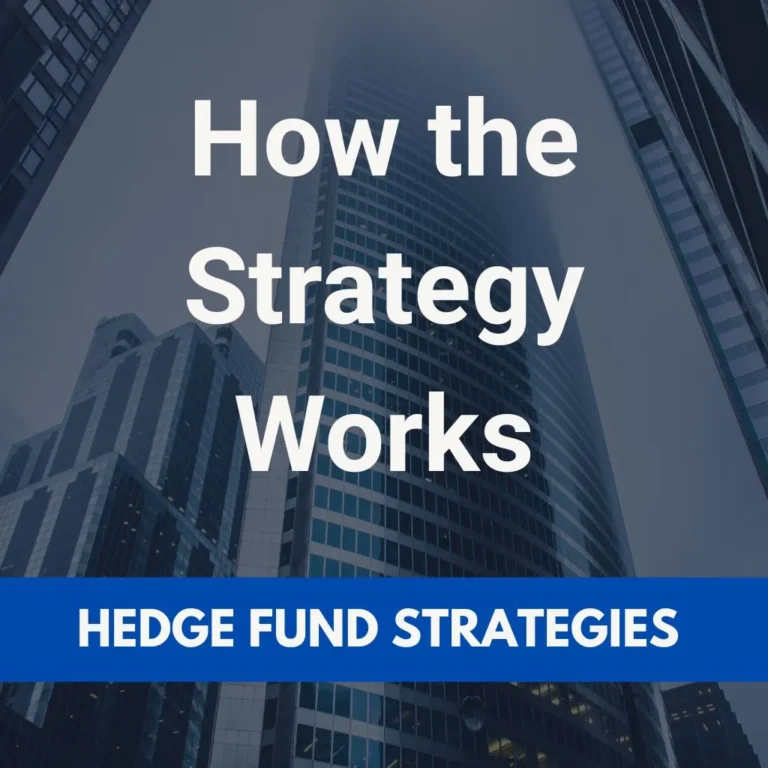A Layered Approach to Alternative Investing
For many investors, gaining access to top-tier hedge funds can be challenging. High investment minimums, stringent investor qualification requirements, and limited capacity often stand in the way. The Fund of Funds (FoF) strategy was developed to address this barrier. Rather than investing directly in individual hedge funds, investors allocate capital to a FoF manager, who then spreads that capital across a carefully selected portfolio of hedge funds. This structure offers diversification, professional oversight, and exposure to multiple strategies in one investment vehicle.

How Fund of Funds Work
At its core, a Fund of Funds is a meta-level investment strategy. Instead of taking direct positions in stocks, bonds, or derivatives, the fund invests in other hedge funds. The FoF manager’s role is crucial: they must select underlying hedge funds, construct a diversified allocation, monitor performance, manage liquidity, and ensure the entire portfolio meets risk and return objectives. The allocation might span across long/short equity managers, global macro funds, event-driven strategies, and quantitative models, allowing the investor to benefit from a broad mix of styles and insights without having to select or manage these funds directly.
This multi-manager approach is particularly attractive to institutional investors or high-net-worth individuals who may not have the resources or expertise to perform due diligence on dozens of hedge funds individually. The FoF manager handles that process, aiming to identify talented managers with consistent alpha-generating capabilities.
Interested in Learning About Other Hedge Fund Strategies?
What Fund of Funds Actually Invest In
While a traditional hedge fund manager places trades in securities or derivatives, the trades made by a Fund of Funds manager are allocations of capital into other hedge funds. For instance, a FoF may allocate 30% to a long/short technology fund, 20% to a global macro fund that profits from currency dislocations, and 15% to a distressed credit manager focusing on corporate defaults in emerging markets. These are not security-level trades but strategic allocations to managers with specialized mandates.
The composition of these portfolios can change over time based on the performance of underlying funds, changing market dynamics, or new opportunities identified by the FoF team. Some FoFs specialize in niche strategies or regions, while others aim for broader exposure. Many maintain rigorous monitoring and may redeem from underperforming funds to reallocate capital more effectively.

Advantages of the Fund of Funds Model
The most cited advantage of a Fund of Funds is diversification. A single investment provides exposure to multiple managers and strategies, reducing idiosyncratic risk. This can help smooth volatility and provide more consistent returns, especially in turbulent market conditions.
Another key benefit is access. Many top-performing hedge funds are closed to new investors or require multi-million-dollar minimum investments. A well-connected FoF manager may secure allocations in these otherwise inaccessible funds, opening the door for smaller or less connected investors.
Additionally, the FoF structure delegates the complex tasks of manager due diligence, performance analysis, and risk management to professionals with deep expertise in evaluating hedge funds. This is especially valuable in the opaque and often relationship-driven hedge fund industry.

Risks and Limitations
Despite its benefits, the Fund of Funds structure has significant drawbacks. Chief among them is the double layer of fees. Investors pay management and performance fees to both the FoF and the underlying hedge funds. This can materially reduce net returns. A typical structure might involve a 1% management fee and 10% incentive fee at the FoF level, in addition to the standard “2 and 20” at the hedge fund level. This fee layering makes cost transparency and careful fee analysis essential.
Another challenge is limited transparency. While some FoFs provide look-through reporting into their underlying fund holdings, others do not. Investors must rely heavily on the FoF manager’s judgment and communication, which may not always align with investor preferences or risk tolerances.
Liquidity can also be constrained. Many hedge funds have lock-up periods and infrequent redemption windows. FoFs that invest in illiquid funds may impose similar restrictions on their own investors. In times of market stress, these limitations can lead to delayed redemptions or forced asset sales at unfavorable prices.
Lastly, manager selection remains a critical risk. If the FoF manager selects underperforming or misaligned hedge funds, the diversification benefit is diluted and the value proposition deteriorates. The skill of the FoF team is therefore central to the fund’s success.
Who Should Consider a Fund of Funds?
For CFA candidates and finance professionals evaluating the Fund of Funds strategy, the key is to match the structure with investor goals. FoFs are most appropriate for investors seeking diversified hedge fund exposure, limited research capacity, and access to closed or elite managers. They are less suited for investors focused on minimizing fees, seeking full transparency, or demanding high liquidity.
From an educational perspective, the FoF model exemplifies a layered, manager-of-managers approach to investing. It highlights the importance of due diligence, portfolio construction, and risk monitoring in the hedge fund world. Understanding this strategy also provides insight into how capital is allocated in the alternative investment space and how institutions manage complexity.
Final Thoughts
The Fund of Funds strategy occupies a unique position in the hedge fund landscape. While it simplifies access and enhances diversification, it also introduces fee complexity and reliance on intermediary judgment. For CFA candidates, studying the mechanics, strengths, and limitations of FoFs is essential to developing a well-rounded view of hedge fund structures. As with all investment approaches, success depends on execution, oversight, and alignment with investor objectives.













